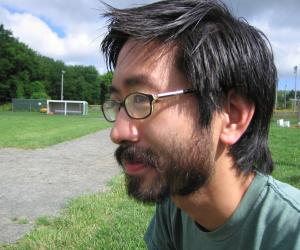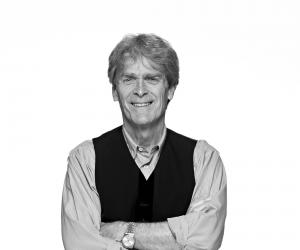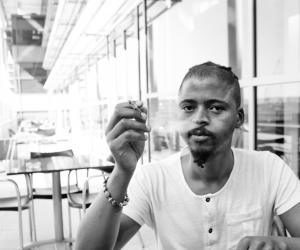
Sitting in an anonymous lecture theatre darkened against the glare and glory of the Cape Town sun, a strange thing happened: an audience of two and a half thousand conference delegates burst into spontaneous applause. Later that day, and again the next, there were shared gasps of excitement, standing ovations and whoops of appreciation – the audience arrived with a raw energy that willed the speakers of the 2013 Design Indaba to transport them.
With a premise that ‘creativity will fuel an economic revolution’ and an impressive 18-year track record, the Design Indaba Conference brings together a suite of multi-disciplinary speakers over three days. With the 40 speakers ranging from programmers to product designers with everything from architects to chefs in between, unexpectedly strong themes around making, connecting and misbehaving emerged. Dovetailed into the predominantly Euro/American-centric conference, South African creatives showcased their work through a design expo, music and film fringe events.
While mostly constrained to a show-and-tell slide show of finished projects, an overarching thematic focus on the creative process allowed the audience to follow the speakers as they ranged freely through radically diverse disciplines, technologies, motivations and eras. This discussion around creative process returned time and time again to the act of making – making by hand, making your own tools and making your own opportunities. Making also emerged as the common ground between an old guard and the new guard of designers in a way that established design as a way of thinking rather than a style or commodity. Masashi Kawamura, creative director and founder of ‘PARTY’, a Creative Lab based in New York and Tokyo, directly addressed the role of making in his work with the assertion: “by doing things differently – you will do things differently” – a simple statement that belies the complexity of the position. PARTY’s work is characterised by the production of high-tech video and digital works through manual processes. In-studio donated sperm samples used to create a cheeky Space Shower TV promotion video and a live rig of 250 SLR cameras used to produce a video clip for Japanese band Androp provide just two examples where manual techniques were deployed in defiance of the ‘quicker and easier’ option of computer generated graphics. The creation of original content through unique process and a belief that mass communication can be authentic, empathetic and touching is driven through this type of making.
Indeed authenticity and empathy brings us to the next common thread of the conference – connections. These connections – these shared moments of insight and pure delight in beauty and accomplishment, and the recognition of the individual at the heart of a design brief – erupted into spontaneous applause from the audience. At one extreme was discussion around connection through the digital/human web interface as exemplified by Ben Terret, head of design at the UK Government Digital Service, redefining website design as ‘information and experience design’ in the new UK government website. At the other extreme was pure delight in the beautiful and visceral; The Brazilian chef Alex Atala’s infectious enthusiasm for his country expressed through his sublime culinary creations managed to transcend the sensory limitations of talking abstractly about cooking.
The final theme of mischief was common to almost all the speakers. Unprogrammed occurrences, unexpected outcomes and failures – common in the speakers’ descriptions of their creative processes – complimented the overt mischief-making and irreverence also presented. Sir John Hegarty (advertising royalty and founder of UK agency Bartle Bogle Hegarty) went so far as to present a slide entitled ‘irreverence’ before outlining his anti-authoritarian approach. Paula Scher (the New York-based graphic designer) opened the conference with an assertion that creativity itself is an act of misbehaving, going on to state: “my initial distain for a project allows me to free myself from what I hate about it”. The most radical speaker, however, did not need a slide or a sound bite to announce his defiance of convention. South African artist Nicholas Hlobo descended on to the stage in a stitched vessel, chanting in his native Xhosa accompanied by the live musicians on stage. A video projection wove scenes from his life and work with evocative and explanatory text fragments. In the darkened conference theatre, the audience was silent – no whoops of joy or moments of applause. Hlobo, the sole South African speaker and also the only practising artist, managed to transcend the limitations of a conference format and uniquely demanded the audience’s attention and contemplation. This was not a presentation or a mere show-and-tell – Hlobo’s performance was intimate, transportative and deeply touching.
It is no coincidence that the sole South African speaker stood apart from the crowd. The South African design community is steadily putting itself on the international map, with the fertile architecture and design scene receiving a boost with the investment and international attention from the FIFA Soccer World Cup in 2010. South Africa’s design community is also set to receive renewed attention in 2014 with Cape Town as the World Design Capital. While the Design Indaba Conference prides its self on bringing international creative thinkers to South Africa, the exchange works both ways. From the incredibly complex social and political history of South Africa comes a unique brand of optimism and defiance that will set apart the nation’s makers and thinkers in the years to come.
Imogene Tudor is director of Make-Space for Architecture and associate at DRAW, Sydney.















